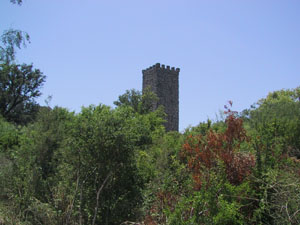JamesDJarvis
First Post
I live a few miles from there (in the same town). i've been there a couple of times over the years, it used to be called "Mystery Hill" and i like the old name more.
Joshua Dyal said:Not likely. It's likely the remnants of early colonial farmers.
JamesDJarvis said:Early colonial farmers seldom bulit anything out of stone aside from the stone marker walls that still thread along long forgotten property lines. Not that I'm saying "it was the Celts" but it is certainly curious and doesn't follow construction patterns of any of the likely suspects (local native americans and colonial farmers).
sniffles said:Maybe it was the Colonial equivalent of Carhenge?
From the Wikipedia article. Granted, it's just wikipedia, but still:JamesDJarvis said:Early colonial farmers seldom bulit anything out of stone aside from the stone marker walls that still thread along long forgotten property lines. Not that I'm saying "it was the Celts" but it is certainly curious and doesn't follow construction patterns of any of the likely suspects (local native americans and colonial farmers).
The site has become a popular tourist attraction, with appeal to believers in New Age systems. Some say the site could be an astronomical observatory built by some unknown, pre-Columbian civilization. They point to the fact that some stones are encased in trees that sprouted before the arrival of the first colonists, and to similarities between the ruins and Phoenician architecture. On the other hand, artifacts found on the site lead many mainstream archaeologists to think that the stones were assembled for various reasons by farmers in the 18th and 19th centuries. For example, a much-discussed "sacrifical stone," which contains grooves that some say channeled blood, looks very much like "lye-leaching stones" found on many old farms. As the name suggests, these stones were used to extract lye from wood ashes, the first step in the manufacture of soap.
The site's history is muddled partly because of William Goodwin, an insurance agent who bought the area in 1936 and became convinced that Mystery Hill was proof that Irish monks lived there long before Christopher Columbus. He moved a lot of the stones around to support his idea, and the current owners, the America's Stonehenge Foundation, say his efforts are "one of the reasons the enigma of Mystery Hill is so deep".
Depending on which part of the 18th century, that's still colonial, so its all good.Joshua Dyal said:I guess I misspoke when I said early colonial formers. 18th and 19th century farmers are certainly post-colonial farmers.

